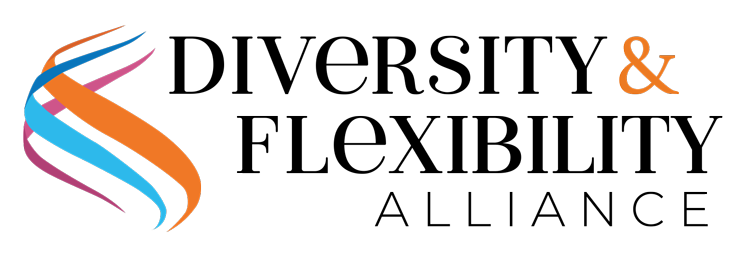The Diversity & Flexibility Alliance is a think tank dedicated to creating work environments centered on inclusion and innovative thought leadership. The Alliance empowers organizations with the tools necessary for advancing women, fostering flexibility, and retaining top talent.
To learn how we can help your organization, please get in touch.

Action Step -Including All Caregivers in Your Parents Affinity Group
The Alliance’s Action Steps are designed to assist organizations with implementing practical strategies and policies related to diversity and flexibility. Members can access full versions of all of the Alliance’s Action Steps in the Member Resource Center.
Affinity groups are an effective way to build a community, share best practices, and promote policies and programming in targeted areas. A number of organizations have working parents affinity groups, as it’s a great way for parents to bond and discuss success stories and challenges. According to our 2017 Law Firm Flexibility Benchmarking Survey, one-third of our survey participants have a working parents affinity group in place. However, a number of organizations have begun to expand their working parents affinity group to a broader caregivers affinity group. This would include all caregivers, including parents and those caring for elderly and ill family members. By expanding to a caregivers affinity group, organizations become more inclusive and recognize that all caregivers face similar challenges (i.e. billable hours requirement, flexible work needs, implicit bias, etc.). Organizations should keep certain considerations in mind in order for a caregivers affinity group to meet broader goals.
EXPAND GOALS: Think through the desired goals and focus of the new group. Without carefully considering your goals, you run the risk of simply changing your working parents affinity group in name only without any real meaningful transformation. We recommend conducting a survey, focus groups, insight interviews, and/or check-in meetings. This way, you can better understand the needs and interests of any new/expanded affinity group to help you shape the focus and priorities…
Action Step -The Importance of Diversity & Flexibility Bright Spots
The Alliance’s Action Steps are designed to assist organizations with implementing practical strategies and policies related to diversity and flexibility. Members can access full versions of all of the Alliance’s Action Steps in the Member Resource Center.
If you Google the term “Bright Spots,” you’ll find the heart-warming story of a Save the Children Fund missionary named Jerry Sternin who helped save an entire community of malnourished children in Vietnam. Rather than focus on what the families of the children were doing wrong, Jerry chose to focus on the few children in the community who were healthy and thriving – the “Bright Spots.” His theory was if all the families could replicate what the Bright Spot mothers were doing, then the entire community could benefit and change for the better.
Sternin called his approach “positive deviance” – focusing on what individuals are doing right, rather than what others are doing wrong.
While most of us are not in the position of saving lives, this Bright Spots theory is also effective in business. In fact, change experts and authors, Dan and Chip Heath, often advise organizations to “find a Bright Spot and clone it.” They recommend focusing on what’s working instead of emphasizing what isn’t and what needs to be fixed.
We couldn’t agree more…
Action Step -Reflect and Regroup to Create a Forward-Thinking D&I Program
The Alliance’s Action Steps are designed to assist organizations with implementing practical strategies and policies related to diversity and flexibility. Members can access full versions of all of the Alliance’s Action Steps in the Member Resource Center.
As part of the year-end strategic planning process, organizational leaders should reflect back on their Diversity & Inclusion goals, programs, and policies to make sure they are achieving the desired results. Decision-makers should also reflect on industry trends and obstacles and develop ways to effectively advance change. By reflecting and regrouping, you gain valuable information to revamp your strategic plan and shape it into a forward-thinking D & I program.
– Assess Current Programs & Policies: Look at your current D & I programs and policies, and review the metrics to see if they’re achieving the intended goals. In order to assess these programs, review usage, data correlations to retention, advancement and satisfaction, perceptions, and general feedback. You can obtain this information through annual surveys, pilot program evaluations, human resources data, check-in meetings, insight interviews, and focus groups. Once you review this data, you can determine if programs are meeting their stated goals or if they need to be revamped.
– Consider Additional Programs & Policies to Fill Gaps: After assessing current programs and policies, think about what additional programs may be necessary to fill gaps and meet broader D & I goals. It’s important to gain an understanding of current industry trends by reviewing relevant D & I studies and industry research reports. You’ll have a clearer understanding as to what types of new programs and policies peer organizations are implementing. Consider adding these types of programs at your organization in order to stay forward-thinking, especially when they correspond with your broader D &